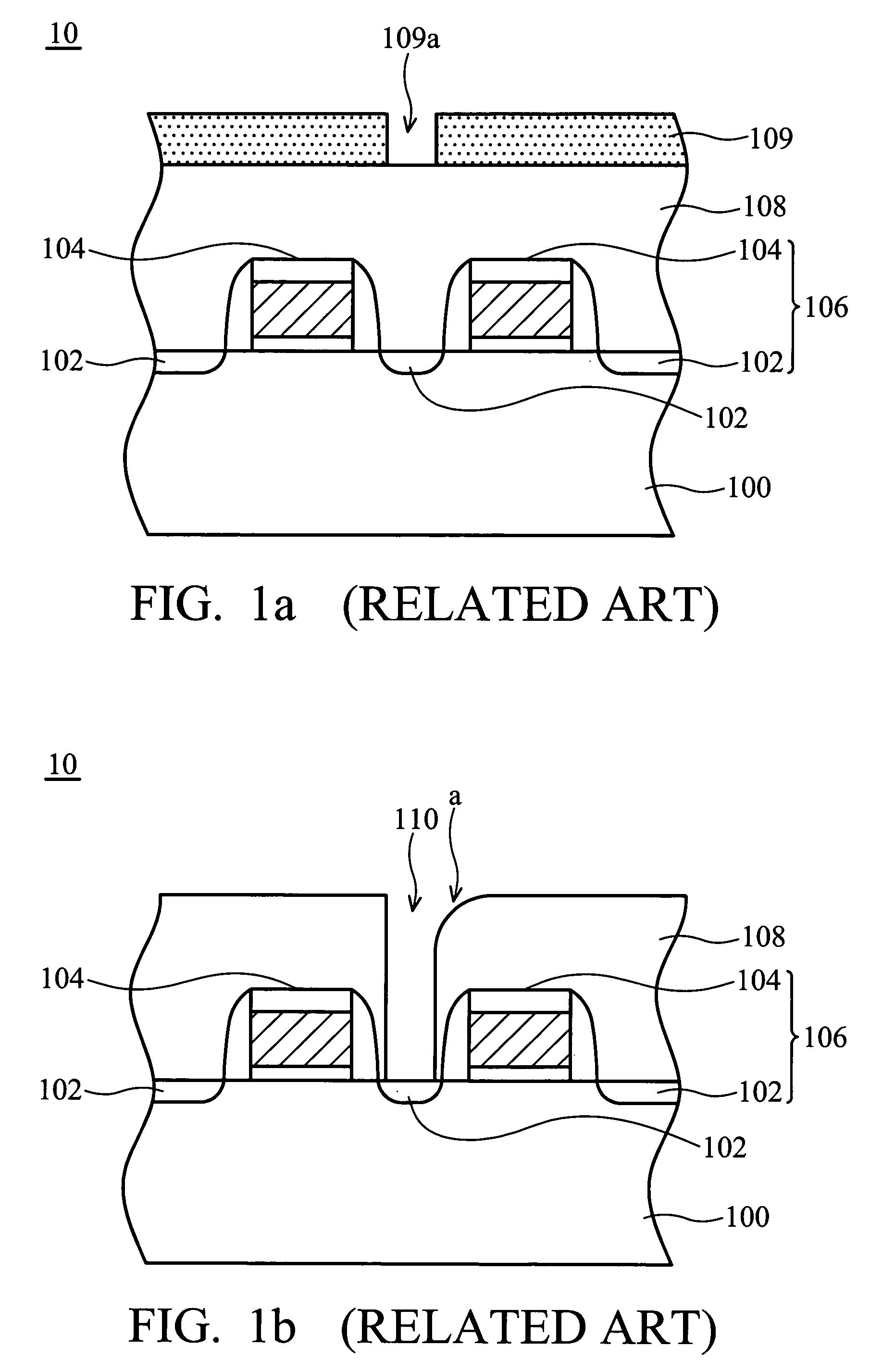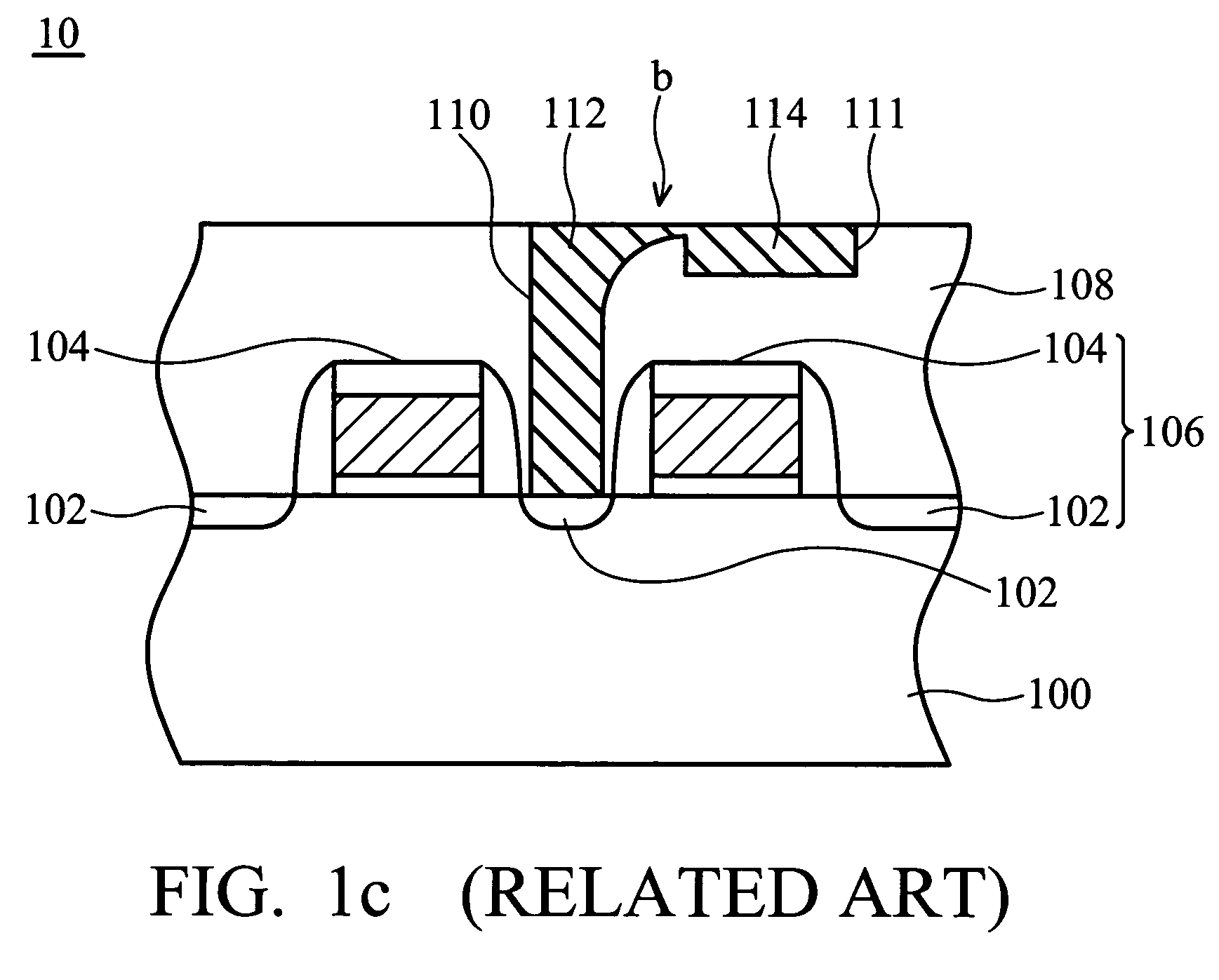Method for preventing contact defects in interlayer dielectric layer
a dielectric layer and interlayer technology, applied in the field of semiconductor/solid-state device manufacturing, can solve the problems of poor etching profile and etching defect in the substrate, serious obstacle in the alignment between each patterned layer, so as to improve the moisture absorption of the interlayer dielectric layer and increase the thermal stability of the dielectric layer
- Summary
- Abstract
- Description
- Claims
- Application Information
AI Technical Summary
Benefits of technology
Problems solved by technology
Method used
Image
Examples
Embodiment Construction
[0021]FIGS. 2a to 2d are cross-sections showing a method of forming a substrate contact (Cs) for a memory device, such as a dynamic random access memory (DRAM), according to the invention.
[0022] First, in FIG. 2a, a substrate 200, such as a silicon substrate or other semiconductor substrate, is provided. The substrate 200 may contain any semiconductor devices, such as MOS transistors, and capacitors, used in the memory devices. Here, in order to simplify the diagram, only a flat substrate is depicted. Moreover, the substrate 200 has a peripheral circuit region 20.
[0023] Next, a plurality of transistors 205 composed of gate structures 203 and source / drain doping regions 202 is formed on the peripheral circuit region 20. The gate structure 203 is composed of a gate dielectric layer, a gate, a gate capping layer, and a gate spacer. The gate dielectric layer may be a silicon oxide layer formed by thermal oxidation. The gate may be a single polysilicon layer or a composite layer compos...
PUM
| Property | Measurement | Unit |
|---|---|---|
| temperature | aaaaa | aaaaa |
| temperature | aaaaa | aaaaa |
| dielectric | aaaaa | aaaaa |
Abstract
Description
Claims
Application Information
 Login to View More
Login to View More - R&D
- Intellectual Property
- Life Sciences
- Materials
- Tech Scout
- Unparalleled Data Quality
- Higher Quality Content
- 60% Fewer Hallucinations
Browse by: Latest US Patents, China's latest patents, Technical Efficacy Thesaurus, Application Domain, Technology Topic, Popular Technical Reports.
© 2025 PatSnap. All rights reserved.Legal|Privacy policy|Modern Slavery Act Transparency Statement|Sitemap|About US| Contact US: help@patsnap.com



